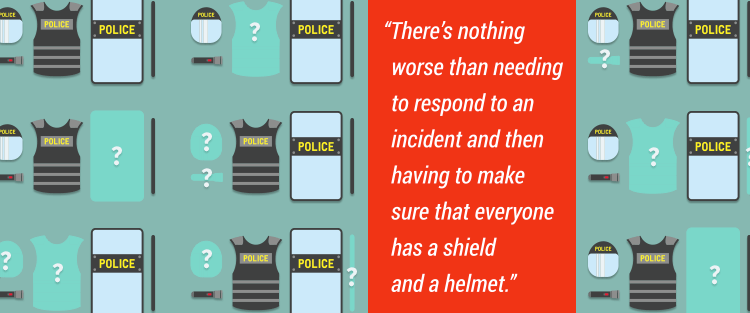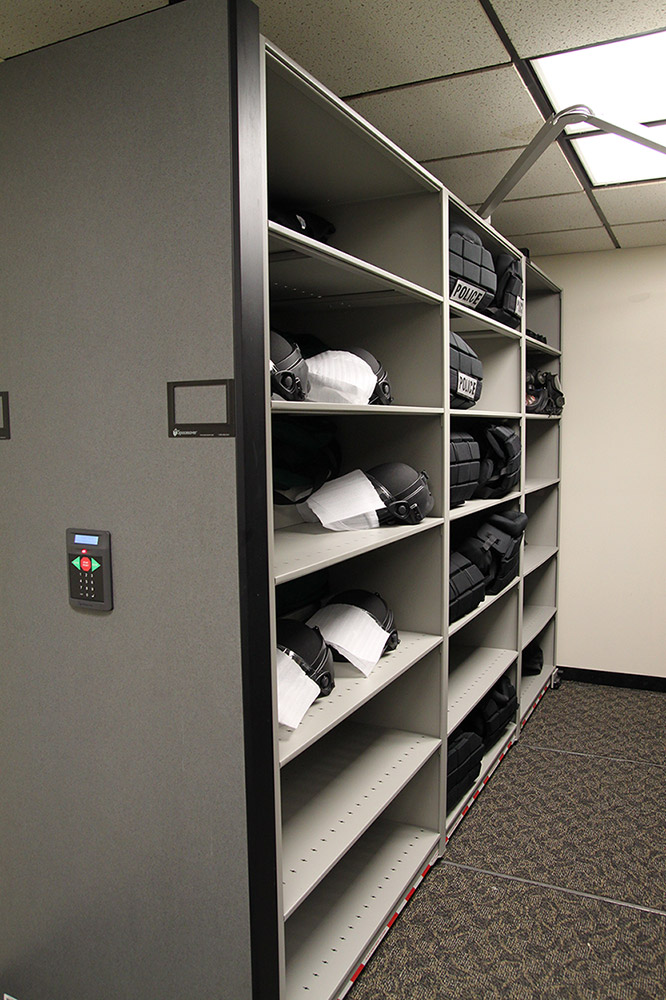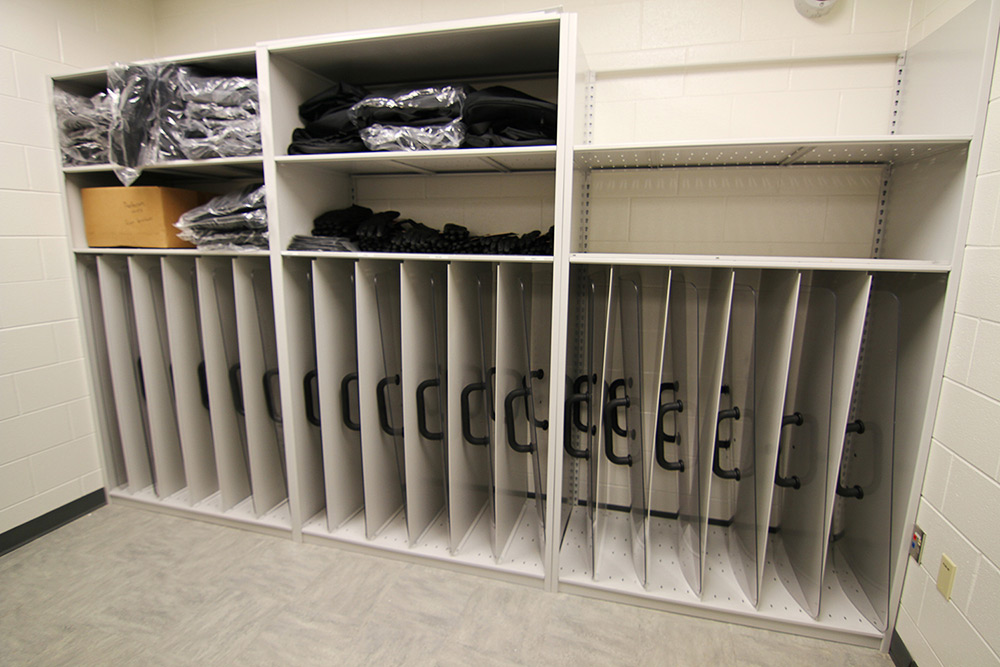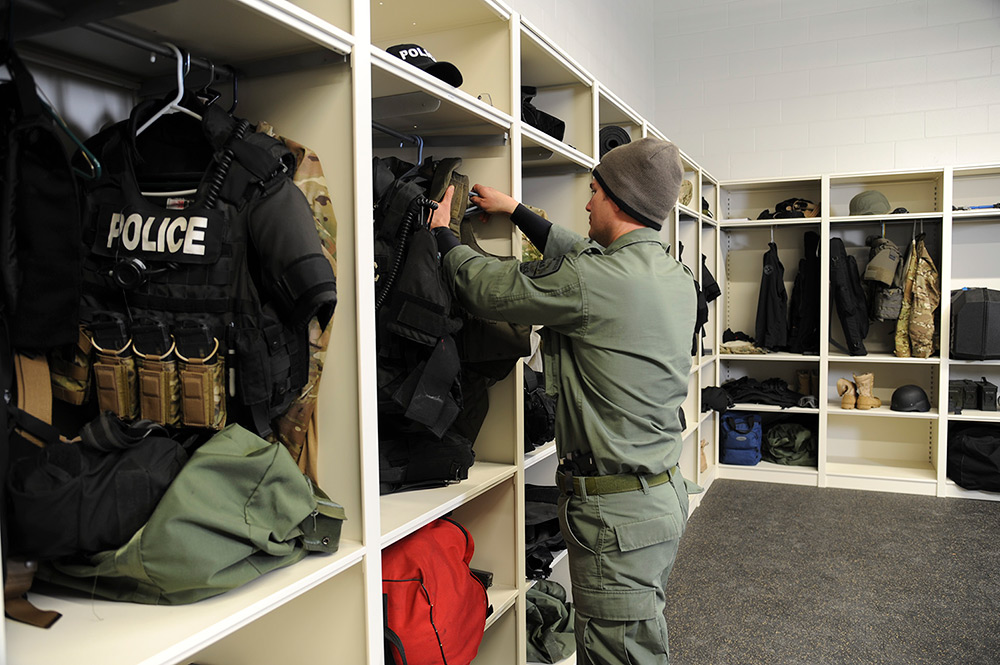CHALLENGER INSIGHTS Vol. 6:
Riot Gear Storage

As protests and civil disturbances become more prevalent, the police use of riot gear has also grown. For many departments, stocking up on this type of equipment (shields, helmets, tear gas canisters, rubber bullets, etc.) ensures that officers are protected in case of a violent situation—which means that it’s important that this type of gear be stored securely.
When it comes to riot gear, it’s a security issue, but it’s also an inventory issue. As an officer at Aurora PD told me, “We don’t use this stuff very often—and it’s expensive. We need to make sure that in the few cases that we need it, it’s there. There’s nothing worse than needing to respond to an incident and then having to make sure that everyone has a shield and a helmet.”
Riot Gear Solutions
In working with reps, I’ve seen several solutions to the quick access/secure storage challenge that riot gear provides:
Wheelhouse with Audit Control
At Aurora PD (photo below, left), the department’s riot gear was stored on a specific carriage of a Wheelhouse system with PIN-code access. Only specific personnel had access to this particular carriage, which helped with inventory control and eliminating gear misplacement.
4-Post Shelving
At the Wake County Detention Center (photo below, center), 4-post shelving was used to create a fast-access solution for riot masks, shields, armor, and more within a designated Riot Gear storage space. Shields were kept upright and separated with the help of metal dividers, while shelves of optimized heights kept additional equipment organized. For Skokie Police Department’s (photo below, right) Tactical Intervention Unit (TIU), four-post shelving was used to create 23 large, open metal lockers—essentially creating large cubbies for each TIU team member.
 |
 |
 |
Riot Gear Opportunities
Where to Look
In your territory, target law enforcement agencies near cities or in a college town, and let’s not forget campus police. In major city agencies, the person who can make a decision about riot gear storage may be found at the precinct or district office level. Most large agencies will also have a Quartermaster or Supply department, and campus police will typically have an officer responsible for riot gear and riot response support.
What to Ask
Some great questions to start with include: How to do you inventory your riot gear to make sure nothing’s missing? How often? How is the gear issued? Who is responsible for issuing the gear? Who has access to the area where the gear is stored? How is access controlled? Seek what the solution “must have” to be successful—and be aware that the person you’re speaking with may not know the answer, as some departments have never issued riot gear.
Have you had success with riot gear storage? What kinds of insights did you find as a result of assisting with this type of storage? Email your experience to McKenna at mdustman@spacesaver.com.